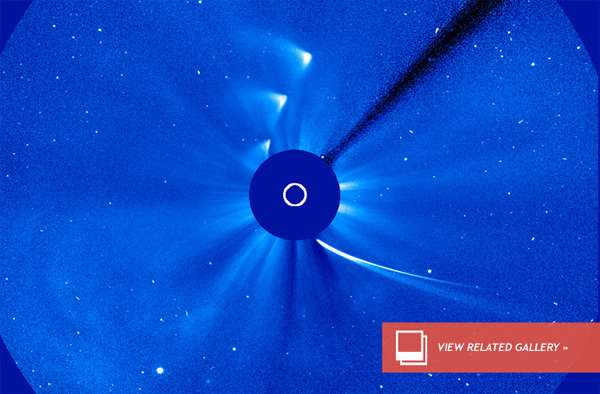All Eyes on ISON as 'Phoenix' Comet Rises from Ashes
All Eyes on ISON as 'Phoenix' Comet Rises from Ashes
When Russian astronomers detected the ‘virgin’ Comet ISON in September 2012, the world was hoping for something a little bit special. But no comet is the same and the nature of ‘dirty snowballs’ is rarely predictable.
In a NASA Comet ISON Observing Campaign (CIOC) blog update, astronomer Padma Yanamandra-Fisher (of the Space Science Institute) remarked on the unpredictable nature of ISON, saying: “this comet has decided to march to its own drummer.” In other words, even for a comet, ISON is its own beast, underlining the fact that comets still have many surprises up their icy sleeves.
So, as ISON made its solar close-pass (an event in its orbit known as ‘perihelion’) on Nov. 28, few would have been able to guess what was going to happen next.
Living up to its celebrity status, ISON put on a dramatic show on Thanksgiving Day, first fading from the view of solar observatories as it seemed to succumb to extreme solar heating. All seemed to be lost when the Solar and Heliospheric Observatory (SoHO) spotted a wisp of what seemed to be ISON’s ‘ashes’ re-emerge from the sun’s lower atmosphere — few would have doubted that ISON was toast; it had disintegrated.
Comet ISON-watchers were crestfallen — was this the end of ISON’s voyage through the inner solar system?
Just as the U.S. gave up hope and went back to the Thanksgiving Day wine, confused messages from astronomers studying data from the armada of solar observatories started to pour out. There was something in the debris stream; a possible chunk of Comet ISON had survived the extreme lower coronal environment a mere million miles from the sun’s “surface” (the photosphere). And it was brightening.
Now, around 24 hours post-perihelion, astronomers are tracking ISON once more as it continues its trek through the inner solar system. It obviously didn’t get away from its solar close encounter unscathed, but there is definitely a significant mass of comet material that made it though the solar roasting.
Comet ISON’s violent solar encounter may have caused a significant shedding of mass from ISON, perhaps exposing more primordial icy material (that formed during the early evolution of our solar system) to the sun’s heating. This is likely causing the brightening, but it seems unlikely that ISON will become the Comet of the Century. But it is without doubt one of the most fascinating objects to visit our solar system for some time and may help to rewrite the our understanding of sungrazing comets.
Image: Composite of SoHO LASCO observations of Comet ISON as it approached the sun and completed perihelion, creating a fan-like comet tail structure as it zoomed back out into interplanetary space. Credit: NASA/ESA(Nov 29, 2013 03:44 PM ET // by Ian O'Neill)












